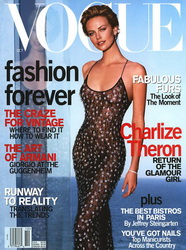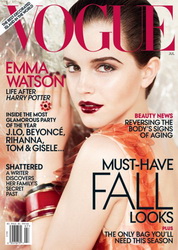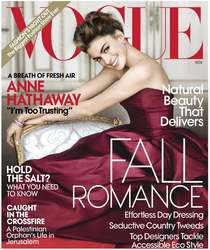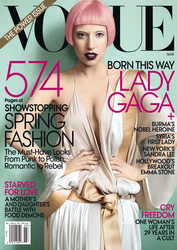
VOGUE ...
123 Years
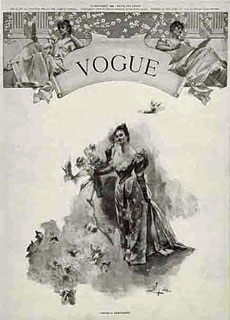
First Issue
Early years
In 1892, Arthur Turnure founded Vogue as a weekly newspaper in the United States, sponsored by Kristoffer Wright; the first issue was published on December 17 of that year, with a cover price of 10 cents (equivalent to $2.63 in 2015). Turnure's intention was to create a publication that celebrated the "ceremonial side of life"; one that "attracts the sage as well as, men of affairs as well as the belle." From its inception, the magazine targeted the new New York aristocracy, establishing social norms in a country that did not value class and ceremony as much as England or France. The magazine at this time was primarily concerned with fashion, with coverage of sports and social affairs included for its male readership.
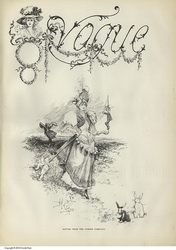
![]()
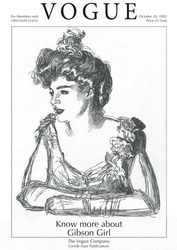
Condé Nast
Condé Montrose Nast bought Vogue in 1905 one year before Turnure's death and gradually grew the publication. He changed it to a bi-weekly magazine and also started Vogue overseas in the 1910s. After first visiting Britain in 1916, he started Vogue there, followed by Vogue in Spain, and then Vogue in Italy and Vogue in France in 1920, where the magazine was well received. The magazine's number of publications and profit increased dramatically under Nast's management. By 1911, the Vogue brand had garnered a reputation that it continues to maintain, targeting an elite audience and expanding into the coverage of weddings.
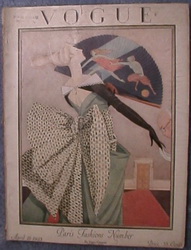
![]()
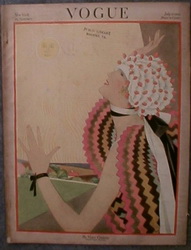
![]()
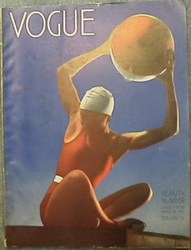
1920s–1970s
The magazine's number of subscriptions surged during the Great Depression, and again during World War II. During this time, noted critic and former Vanity Fair editor Frank Crowninshield served as its editor, having been moved over from Vanity Fair by publisher Condé Nast. Laird Borrelli notes that Vogue led the decline of fashion illustration in the late 1930s, when they began to replace their celebrated illustrated covers, by artists such as Dagmar Freuchen, with photographic images.
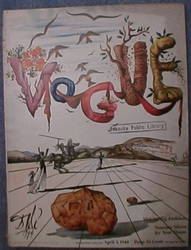
![]()
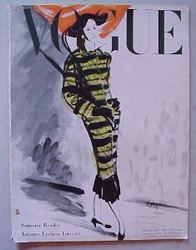
In the 1960s, with Diana Vreeland as editor-in-chief and personality, the magazine began to appeal to the youth of the sexual revolution by focusing more on contemporary fashion and editorial features that openly discussed sexuality. Toward this end, Vogue extended coverage to include East Village boutiques such as Limbo on St. Mark's Place, as well as including features of "downtown" personalities such as Andy Warhol, "Superstar" Jane Holzer's favorite haunts. Vogue also continued making household names out of models, a practice that continued with Suzy Parker, Twiggy, Jean Shrimpton, Lauren Hutton, Veruschka, Marisa Berenson, Penelope Tree, and others.
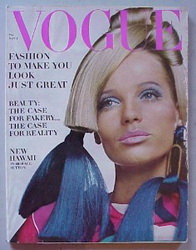
In 1973, Vogue became a monthly publication. Under editor-in-chief Grace Mirabella, the magazine underwent extensive editorial and stylistic changes to respond to changes in the lifestyles of its target audience.
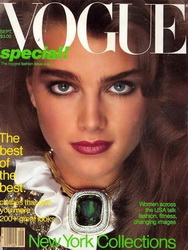
![]()
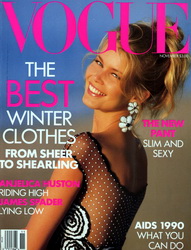
Anna Wintour takes over
Anna Wintour became editor-in-chief of American Vogue in July 1988. Noted for her trademark bob cut and sunglasses, Wintour sought to revitalize the brand by making it younger and more approachable; she directed the focus towards new and accessible concepts of "fashion" for a wider audience. Wintour's influence allowed the magazine to maintain its high circulation, while staff discovered new trends that a broader audience could conceivably afford. For example, the inaugural cover of the magazine under Wintour's editorship featured a three-quarter-length photograph of Michaela Bercu, an Israeli super model, wearing a bejeweled Christian Lacroix jacket and a pair of jeans, a departure from her predecessors' tendency to portray a woman's face alone; according to the Times, this gave "greater importance to both her clothing and her body".
As fashion editor, Grace Coddington wrote in her memoirs, the cover "endorsed a democratic new high/low attitude to dressing, added some youthful but sophisticated raciness, and garnished it with a dash of confident energy and drive that implied getting somewhere fast. It was quintessential Anna." Wintour continues to be American Vogue's editor-in-chief to this day.
The contrast of Wintour's vision with that of her predecessors was noted as striking by observers, both critics and defenders. Amanda Fortini, fashion and style contributor for Slate, argues that her policy has been beneficial for Vogue:
When Wintour was appointed head of Vogue, Grace Mirabella had been editor in chief for 17 years, and the magazine had grown complacent, coasting along in what one journalist derisively called "its beige years". Beige was the color Mirabella had used to paint over the red walls in Diana Vreeland's office, and the metaphor was apt: The magazine had become boring. Among Condé Nast executives, there was worry that the grand dame of fashion publications was losing ground to upstart Elle, which in just three years had reached a paid circulation of 851,000 to Vogue's stagnant 1.2 million. And so Condé Nast publisher Si Newhouse brought in the 38-year-old Wintour, who through editor-in-chief positions at British Vogue and House & Garden, had become known not only for her cutting-edge visual sense, but also for her ability to radically revamp a magazine to shake things up.
As of March 2014, only five men have been featured on the cover of the American edition:
|
Vogue now
May 2013, marked the one-year anniversary of a healthy body initiative that was signed by the magazine's international editors - the initiative represents a commitment from the editors to promote positive body images within the content of Vogue's numerous editions. Australian editor Edwina McCann explained:
In the magazine we're moving away from those very young, very thin girls. A year down the track, we ask ourselves what can Vogue do about it? And an issue like this [June 2013 issue] is what we can do about it. If I was aware of a girl being ill on a photo shoot I wouldn't allow that shoot to go ahead, or if a girl had an eating disorder I would not shoot her.
The Australian edition's June 2013 issue was entitled the "Body Issue" and featured articles on exercise and nutrition, as well as a diverse range of models. New York-based Australian plus-size model Robyn Lawley, previously featured on the cover of Vogue Italia, also appeared in a swimwear shoot for the June issue.
